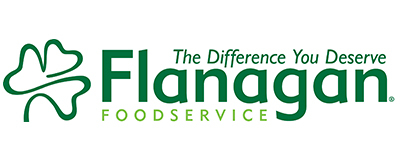
We collect basic website visitor information on this website and store it in cookies. We also utilize Google Analytics to track page view information to assist us in improving our website.

It’s a fact. Restaurants across Canada are on the brink of reopening, whether to patio dining, in-restaurant meals, or both. Diners are understandably excited to return to their favourite culinary haunts. But what about restaurant staff, many of whom have been furloughed for part or all of the pandemic? How safe is it for them to return?
As Jeff Dover, principal of fsSTRATEGY Inc., says, “Very few cases of COVID-19 have been confirmed as spreading in restaurants; this includes areas of the country where indoor dining has been allowed. In short, the restaurant industry was [already] doing a good job of keeping staff safe.”
“Very few cases of COVID-19 have been confirmed as spreading in restaurants. In short, the restaurant industry was [already] doing a good job of keeping staff safe.”
Jeff Dover, principal of fsSTRATEGY Inc.
But keeping restaurant staff safe and having restaurant staff who feel safe are two different things. Canadian Restaurant Workers Coalition has been petitioning provincial governments to improve restaurant workers’ protections like paid sick leave and overtime pay. As reported in the Toronto Star, Not 9 to 5, a non-profit providing resources for mental-health well-being among hospitality workers, recently introduced the Mind Your Health project. The project includes a certification program on workplace safety from a psychological perspective, along with an online survey to collect data on mental-health well-being among hospitality workers.
“The key for me is to ensure that staff wear masks and, even more so, keep six feet apart when possible,” advises Dover. “When staff have to be within six feet (e.g., taking orders, picking up food), the time of exposure should be limited. One of the primary challenges is tight kitchen spaces such as a line with multiple stations not six feet apart. Redesigning the menu to have fewer kitchen stations will help keep the staff safe. COVID-19 is more likely to be transmitted indoors and in close spaces. Redesign your workflows to eliminate or limit such interactions.”
Sanitize regularly. Tables, work surfaces, and other areas, both front and back of house.
Reduce staff sharing. For instance, kitchen staff should never share utensils at back of house.
Change your menuing. Other changes will need to be instituted to ensure the safety of both your guests and your employees. Reusable menus, for instance, may become a thing of the past. Many restaurants, says Dover, are putting QR codes on tables to limit contact with shared items. “When guests request menus, they should be provided with a single use copy. Condiments should not be kept on tables and should be sanitized before use. Cutlery should be rolled and brought to the table after the guests are seated. Simple adjustments like these will assist in limiting the spread of COVID-19 for both guests and staff.”
Appoint a COVID-19 point person. “I recommend having someone responsible each shift to ensure COVID-19 prevention practices are adhered to,” says Dover. “This person could also be the go-to for questions about practices being employed to keep customers and staff safe.”
Organize vaccination days. A number of restaurant chains in the US have said they are providing pay for staff to get vaccinated and are even helping their employees to book appointments.
Offer paid sick days. This is key, says Dover. “You don’t want staff to come to work when they are not feeling well. Take advantage of federal and provincial paid sick day programs if you can. Paying sick days will be less expensive in the long run than having your restaurant closed due to a COVID-19 outbreak.” Should you experience an outbreak, make sure you have records of which employees worked when, along with info on your dine-in restaurant customers and who served them. Contact tracing is key.
Ramp up your communication. Let your staff know what you’re doing to keep them safe, and then inform your guests of the steps you’ve introduced to keep them – and your employees – safe. “If you are able to pay sick days, I would communicate it,” Dover advises. “The restaurant chains in the States paying staff (I heard two to four hours) to get vaccinated received great publicity. We have seen in jurisdictions that have opened up that there is significant pent-up demand. However, not all staff will be comfortable working and not all potential customers will be comfortable in dining rooms. Communication on the safety practices being employed will help alleviate any such fears.”
Employee safety, testing and validation will be key to successful restaurant reopening. Healthcare and foodservice workers may be required to validate their health status before handling food in the post-COVID-19 environment. Here are some protocols you should initiate to ensure the highest level of safety:
Written by Jane Auster and shared with permission from chefconnexion.com.

